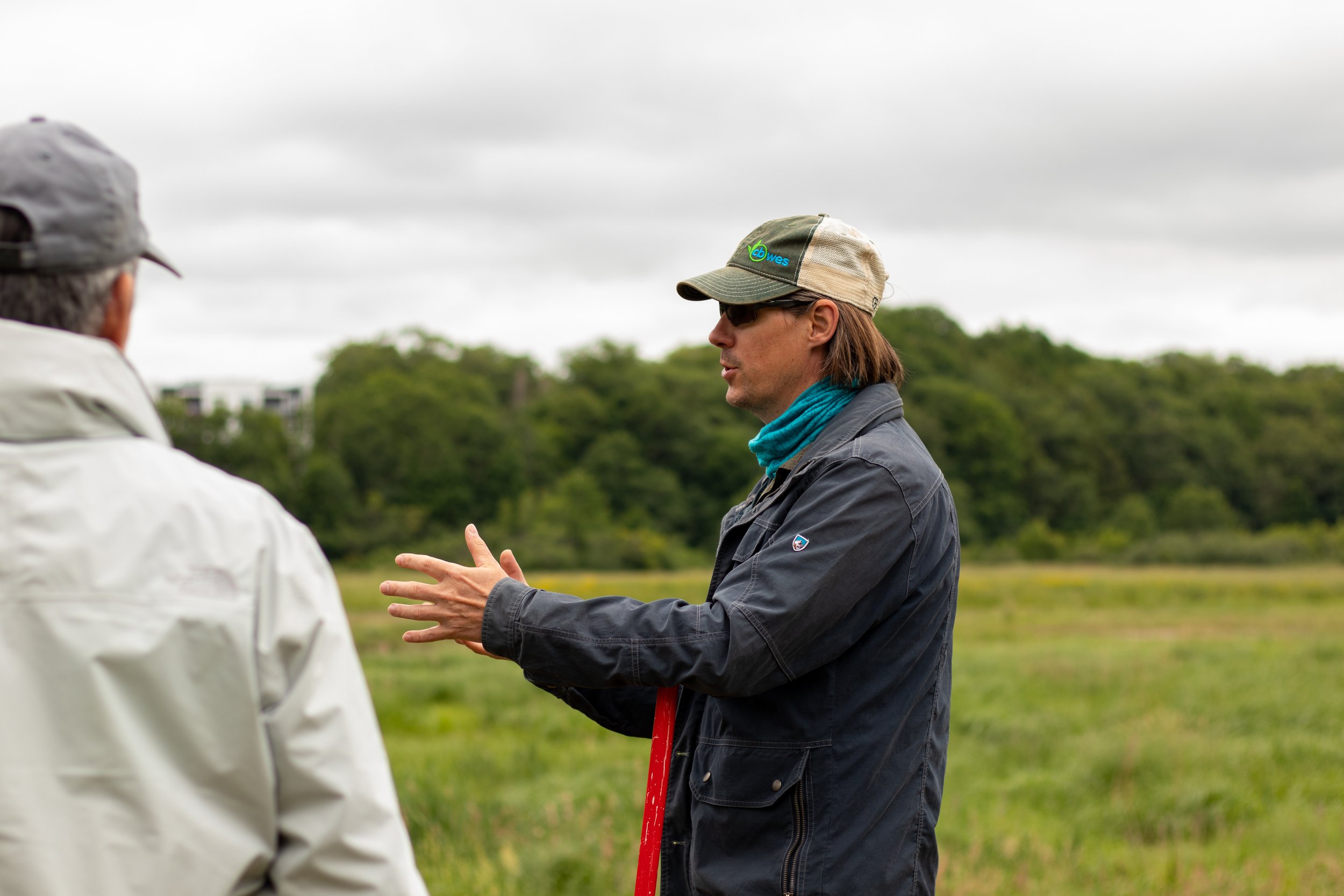


















Saint Mary’s University professor Dr. Danika van Proosdij and her TransCoastal Adaptations team members had the opportunity to present their work to the Honorable Tim Halman, Nova Scotia Minister of Environment and Climate Change. The presentation included an interactive tour to showcase the design, implementation and monitoring of the Belcher Street Marsh Dyke Realignment and Tidal Wetland Restoration Project.
The project includes 75 hectares of tidal wetlands along Nova Scotia’s Bay of Fundy that van Proosdij’s team is working to restore habitat and protect against flooding and coastal erosion. Using nature-based strategies and restructuring old dyke infrastructure, the team creates new tidal wetlands to absorb rising sea levels, protect nearby communities and create new ecosystems for marine life.
The newly realigned dyke at the Belcher Street Marsh protects the active agricultural land behind it. The restored tidal wetland will increase the natural absorption of wave energy during storms, thereby protecting the dyke. The expanded floodplain provides more room for floodwaters. The new marsh is now a productive natural habitat supporting species diversity. The dykes overlooking the new marsh provide a recreational opportunity for enjoying nature and connecting to the restored natural condition of the site. The site is a living laboratory and training site to develop dykeland realignment and marshland restoration skills.
Want to learn more? Join TransCoastal Adaptations for a workshop on Climate-Resilient Coastal Nature-Based Infrastructure, June 29–30.
TransCoastal Adaptations is a Centre for Nature-Based Solutions at Saint Mary’s University that engages in research and partnerships that promote and undertake projects related to climate change adaptation.

